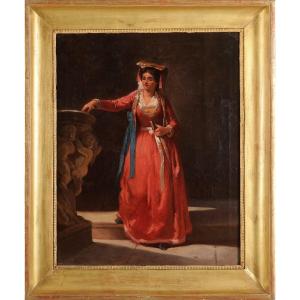(Lyon, 1867 – Nice, 1945
Portrait of Roger Goldet (1911-1997) at age 4
Pastel
H. 59.5 cm; L. 43 cm
Signed at the top right and dated 1914
Provenance: The model's family
Between the end of the 19th century and the first decades of the 20th century, Abel Faivre acquired a national reputation as an illustrator and poster designer. A regular contributor to magazines such as Le Rire, L'Assiette au beurre or Le Figaro illustré, he was one of the founders of the Salon des Humoristes, of which he became president. The propaganda posters he produced during the First World War completed his celebrity. But Abel Faivre was also a painter and occasionally a portrait painter. And many of his paintings bear the imprint of the man he considered his inspiration and master: Auguste Renoir. Abel frequented Renoir's house at the Château des Brouillards (allée Girardon in Paris) and he followed him on his holidays to Essoyes (Champagne). The paintings he presented at the Salon of French Artists, under titles reminiscent of Impressionism (Young Woman with Cherries, Young Women in the Countryside, Woman with a Fan, etc.), reflected so well the influence of his mentor whom Forain nicknamed him “Le Renoir et les raisins”! This is the case with our pastel, a virtuoso representation of a four-year-old boy, but whose cheerful countenance, vermilion cheeks, are reminiscent of certain faces of Renoir. (The outfits and hairstyles of little boys, at this time, hardly differed from the dress of little girls.) In her Dictionary of Impressionism, Sophie Monneret remarked how much the graceful and fresh paintings of Abel Faivre contrasted with " the withered nudities and the vengeful images of his caricatures”. Here is a great example! The young Roger Goldet with blond curls sketched by Faivre in 1914 comes from two great families of French industry: The Goldschmidts by his father, who changed his name in 1917, and the Deutsches de la Meurthe, his mother's maiden name. , oil industry. Such a genetic heritage instinctively directed him towards entrepreneurship and in particular the takeover of Parfums Pinaud in 1935, which he developed into a major brand of perfumery and cosmetics. He was also the president of France-Parfums. Louis XVI frame placed at the time of the creation of the work.


































 Le Magazine de PROANTIC
Le Magazine de PROANTIC TRÉSORS Magazine
TRÉSORS Magazine Rivista Artiquariato
Rivista Artiquariato